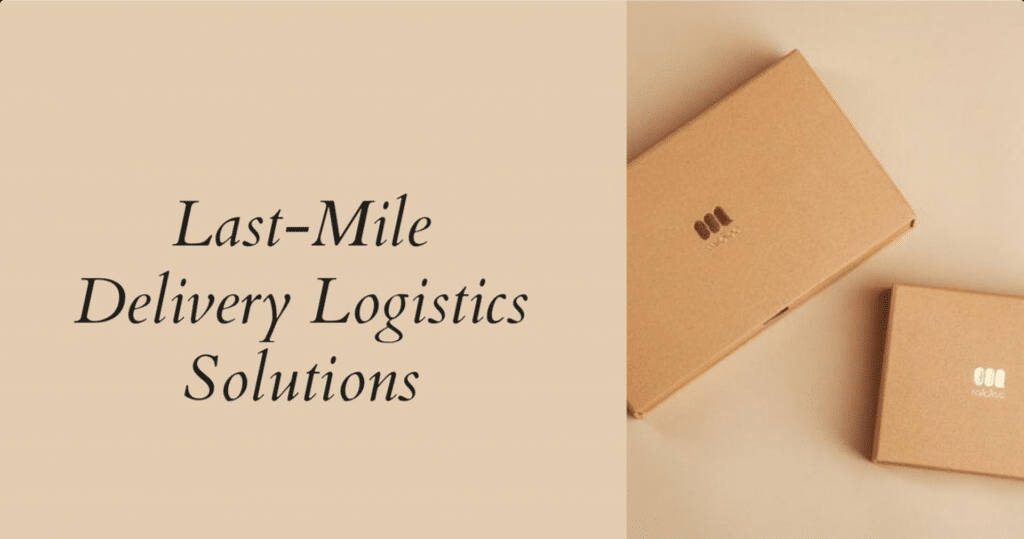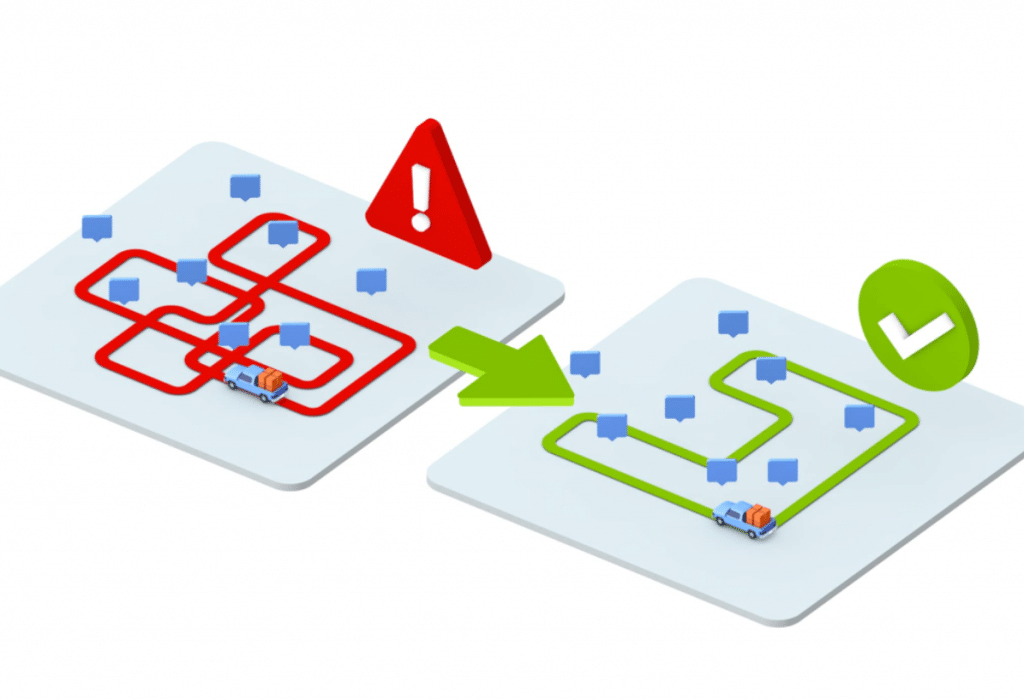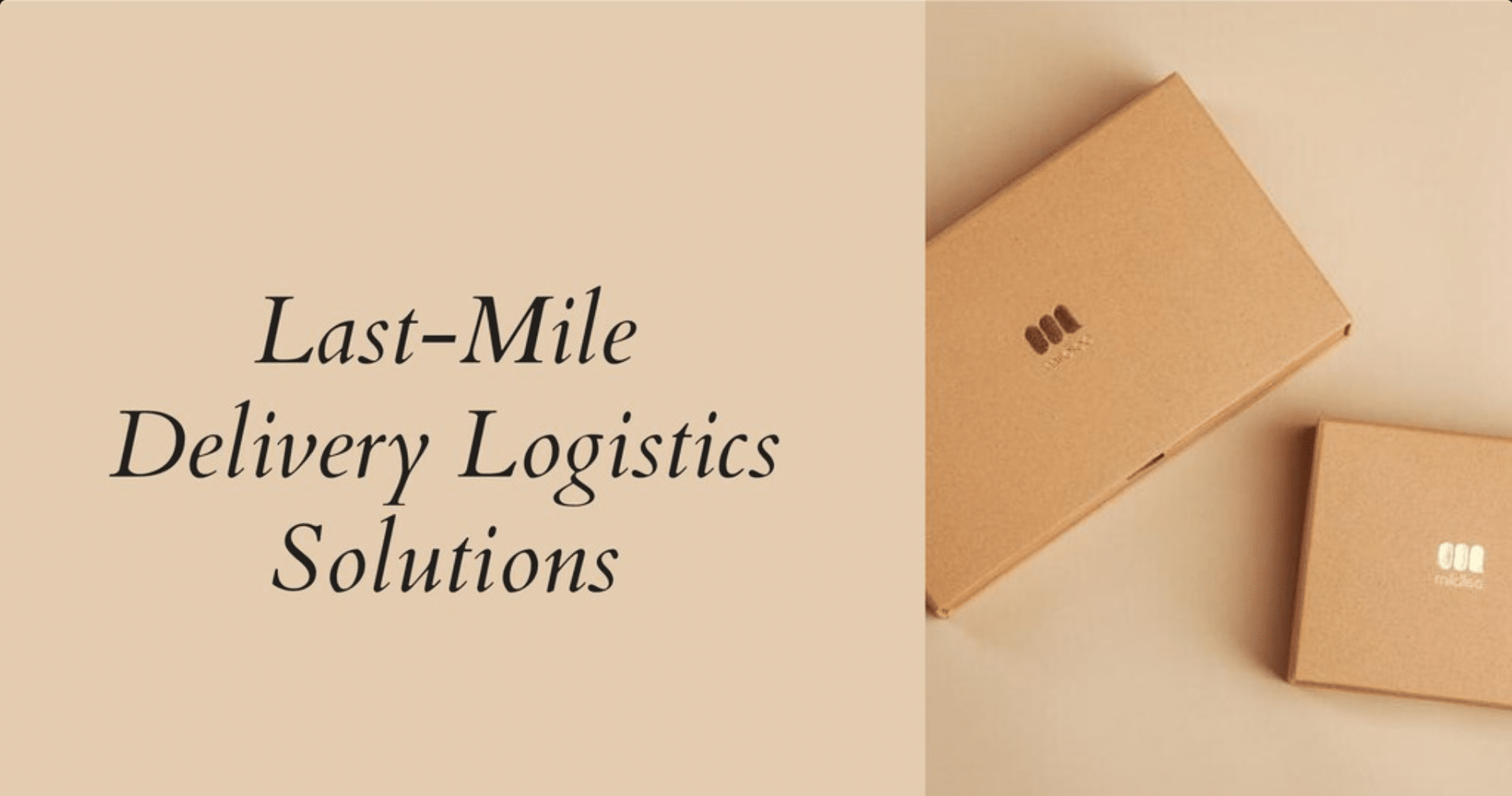The Best Last Mile Delivery Logistics Solution

A product’s journey from a warehouse shelf to a delivery truck to a customer is called the “last mile” of delivery. This is the point of arrival of the package at the end user’s doorstep. The last mile is one of the most expensive and time-consuming parts of the shipping process, in addition to being a necessity for customer satisfaction.
Companies must overcome bottlenecks and deliver items on time while dealing with the last mile as the most challenging and expensive part of logistics. In addition, the pandemic only accelerated consumer buying patterns that were already changing. It doesn’t matter if they’re ordering a prescription, flowers, or dinner, consumers today expect fast, free delivery.
We’re going to explore which industries use last mile delivery software in this guide and help you select the best last-mile delivery logistics solution for your company.
Last Mile Delivery
When you ship a parcel from a fulfillment center to a final destination, which is usually a residence, you are speaking of last mile delivery.
Consumers expect to receive their products quickly, so it’s the most critical step in the delivery process. It is also the most costly.
How are last mile delivery logistics used by different industries?
Here are some of the primary industries using last mile delivery logistics solutions, though this list is not exhaustive.
Pharmacy
Those days are gone when you went to your local pharmacy or a chain pharmacy like Walgreens. Pharmacies also experienced a decrease in foot traffic as a result of the pandemic, as many other industries did.
Prescriptions are now being delivered to customers, sometimes on demand. This has its advantages, such as …
- The management of inventory accurately.
- Reducing the number of prescriptions returned (when patients fail to pick up their prescription).
- Allowing pharmacists to consult more freely.
It is not without its challenges, though.
To protect their customer base and brand, pharmacies need low overhead costs, compliant software, and responsive, reliable customer service. They can either work with third-party couriers or handle in-house deliveries.
Rx Delivered Now, for example, adheres to federal, state, and local regulations. Additionally, patients can trust their pharmacists to deliver their prescriptions on time.
Construction
For building materials to arrive on-site, last mile delivery logistics are vital.
Using materials delivery software, contractors and construction site managers can better schedule jobs, match materials with craftsmen, and ensure drivers locate their sites efficiently. In addition, they won’t need to store excess materials.
To use an example, TOOLBX’s all-in-one platform for procurement of construction materials ensures that orders are delivered directly to the construction site on the same day they are placed.
Using TOOLBX, a driver can deliver construction materials.
Cannabis
Sales of cannabis are expected to reach $33.6 billion by 2025, a phenomenal growth rate.
There are still some states that do not allow brick-and-mortar dispensaries, so last mile cannabis delivery is vital to growth.
An increase of 300% was seen in curbside pickups and home deliveries during the pandemic.
A Nevada company called Blackbird provides delivery services to small cannabis businesses.
Most large cannabis dispensaries utilize an in-house delivery management software or a logistic software vendor – like MileNow- in order to manage last mile deliveries.
Managing drivers, planning routes, fulfilling deliveries, and complying with marijuana delivery laws are all made easier with cannabis delivery software.
Floral
You can order flowers from companies such as FTD, Teleflora, or 1-800-Flowers.
BloomNation is a newer player with about 3,500 florists who deliver to nearly 5,000 cities. When customers search online for flowers, they can contact local florists directly using the florist’s direct site or the BloomNation marketplace.
In order to make customers happy with their flower deliveries, BloomNation’s ecommerce software integrates smoothly with Onfleet’s developer-friendly API.
Grocery
The company began offering home delivery and curbside pickup in 2016, at the same time it expanded into 14 new markets. These new services were not heavily marketed by leadership. Because they wanted to make sure they could meet demand first. They turned to MileNow for help.
As a result of MileNow, the company reduced costs by 45% per year and improved route efficiency.
Restaurants
Prior to COVID, people preferred to dine on-premises. Nowadays, they prefer to eat in the comfort and safety of their homes.
Restaurants needed to change rapidly to stay in business. Restaurants still need a reliable way to deliver food, even if they accept orders online. In addition, as more restaurants offered delivery services, there were fewer third-party drivers available.
To boost customer loyalty and maintain lower delivery costs, Original ChopShop and bellagreen in Texas hired their own drivers and partnered with MileNow to offer home delivery service. Almost immediately, direct orders increased and negative feedback decreased.
The Best Last Mile Delivery Logistics Solution: A Guide
Here we will look at some of the key elements of a last mile delivery logistics solution.
Auto Assignment
Every last mile logistics solution must have an Auto-Assignment feature. This technology helps reduce the amount of time it takes to deliver a product on the last mile and the labor costs associated with it.
An automated dispatch management system could increase profits by over 12%, improve vehicle utilization by 13%, and reduce travel time by 15%, according to ABI Research.
Route Optimization
Routing optimization reduces delivery time by finding the fastest and most efficient routes. For the most efficient last mile routing, it takes into account time, location, capacity, and traffic. Additionally, you can alert your drivers about any last-minute changes to their routes so they can avoid traffic delays.
With route optimization, you can:
- Visualize the delivery routes
- to reduce delivery times
- and eliminate bottlenecks
- to improve customer service
- Reduce vehicle and fuel costs

Driver & Customer Communication
During the last mile delivery, keep in touch with your drivers and customers. In order to ensure your customers are delighted.
To begin with, you can send automatic SMS updates to let your customers know when their delivery has started when it will arrive, and when it has arrived.
To check on the progress of their order, customers can call, message, or call the dispatcher.
Driver Tracking
Tracking drivers in real-time allows dispatchers to find out where they are and get ETAs for deliveries in the last mile. When they need to notify customers of potential delays or reset expectations, this function is extremely helpful. Also, in case the initial driver is late returning to the depot, delivery managers are able to replan routes.
Read More: Top last mile delivery companies
E-Signatures & Proof of Delivery
In order to protect their drivers and customers, delivery firms focused more on contactless signatures and proof of delivery over the pandemic. Drivers can collect photos, signatures, and barcodes on the spot using MileNow’s proof of delivery feature.
Analytics/Reporting
By using the analytics and reporting features, you can analyze performance and find key insights, such as the number of successful deliveries versus failed deliveries, the performance of the drivers, and their resource usage.
As an example, MileNow gives you the ability to visualize delivery success rates, on-time rates, service times, customer feedback scores, and distance traveled. Additionally, for a complete performance overview, you can segment data by driver, team, day, week, and even hour.
You can use this information to proactively avoid delays and missed or failed deliveries.
Feedback Collection
Additionally, you should ensure that your last mile delivery logistics solution enables you to collect customer feedback. After each delivery, you can gather firsthand feedback from your customers through a feedback form.
Ratings and reviews from customers help you identify issues with your software and improve it.
Platform Integrations
In addition, you should make sure that the last mile logistics solution can be integrated with other platforms, such as ERP or time management systems.
The MileNow platform, for instance, allows you to import CSV or Excel files or to use Zapier to connect to hundreds of third-party applications, including Shopify and Google Sheets. You can also integrate the API with your applications using the developer-friendly interface.
Start Using The Leading Last Mile Delivery Logistics Solution
MileNow offers leaner operations, intelligent decisions, and an enjoyable customer experience as the world’s most advanced last mile delivery platform.
With MileNow, you’ll get auto-assignment, driver tracking, route optimization, and feedback collection, among other useful features. Start your free 14-day trial today and discover how MileNow has the features you need to implement your last mile delivery logistics.
Read More: Pharmacy Delivery: Challenges, Trends and Solutions

